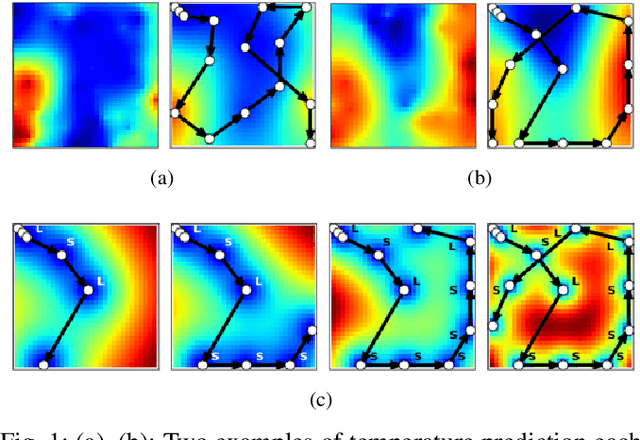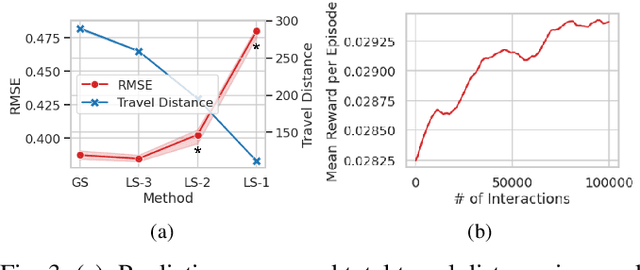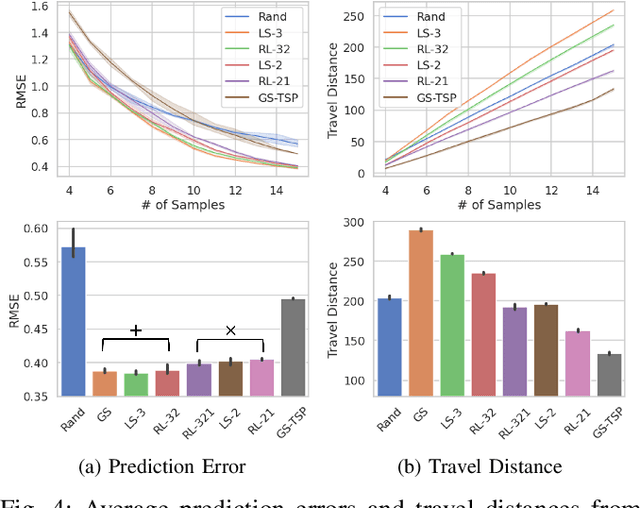Adaptive Selection of Informative Path Planning Strategies via Reinforcement Learning
Paper and Code
Aug 14, 2021



In our previous work, we designed a systematic policy to prioritize sampling locations to lead significant accuracy improvement in spatial interpolation by using the prediction uncertainty of Gaussian Process Regression (GPR) as "attraction force" to deployed robots in path planning. Although the integration with Traveling Salesman Problem (TSP) solvers was also shown to produce relatively short travel distance, we here hypothesise several factors that could decrease the overall prediction precision as well because sub-optimal locations may eventually be included in their paths. To address this issue, in this paper, we first explore "local planning" approaches adopting various spatial ranges within which next sampling locations are prioritized to investigate their effects on the prediction performance as well as incurred travel distance. Also, Reinforcement Learning (RL)-based high-level controllers are trained to adaptively produce blended plans from a particular set of local planners to inherit unique strengths from that selection depending on latest prediction states. Our experiments on use cases of temperature monitoring robots demonstrate that the dynamic mixtures of planners can not only generate sophisticated, informative plans that a single planner could not create alone but also ensure significantly reduced travel distances at no cost of prediction reliability without any assist of additional modules for shortest path calculation.
 Add to Chrome
Add to Chrome Add to Firefox
Add to Firefox Add to Edge
Add to Edge